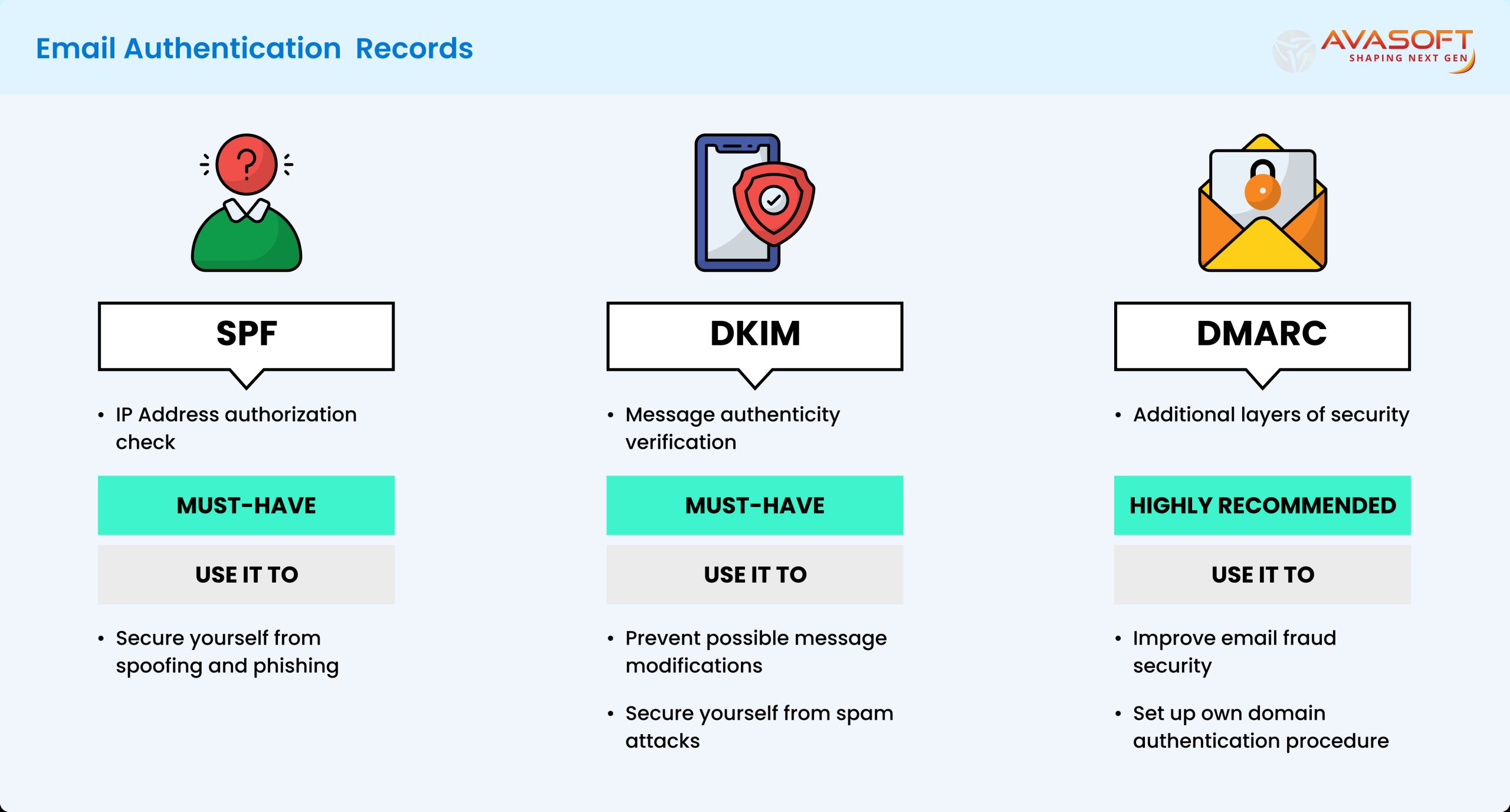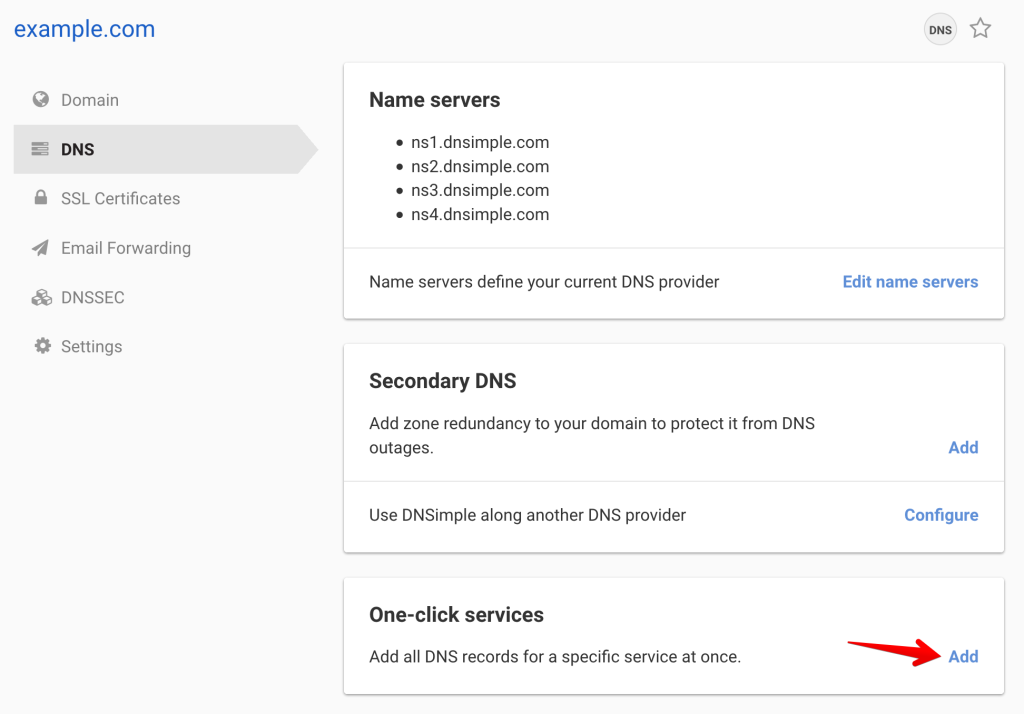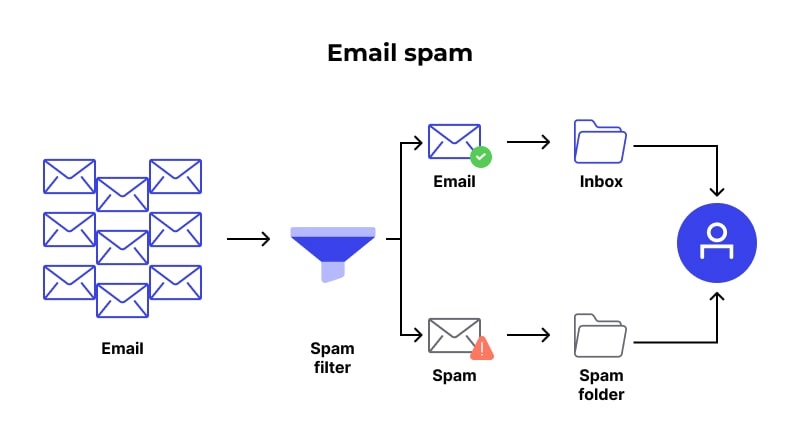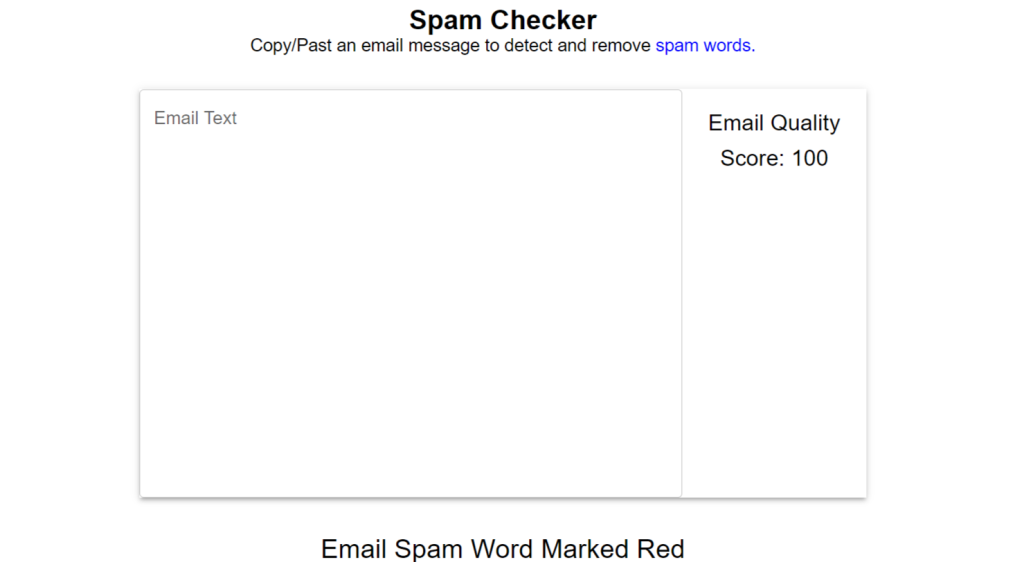
Have you ever felt like you were talking to a wall when sending Shopify emails to your customers? It could be true if your emails land in the spam folder instead of the inbox.
This is a phenomenon I have come across many times in my ten year old journey as an email marketing expert. Shopify emails going to spam is a hit that’s hard to take. But, it is something that you can easily fix. (If not, you can always reach out to an email deliverability consultant!)
This guide will take you through solutions that you can apply and get back to your email marketing campaign. Let your emails reach where your recipients are—the inbox.
Shopify Emails Going to Spam: A Quick Fix
Here are the reasons why your Shopify emails end up in the spam folder and how to fix them.
1. Authenticate Your Domain
If you have not authenticated your Shopify domain yet, you are in big trouble. Not only does this land your mails in the spam folder, it also creates mistrust among your ESPs (Email Service Provides) like Google, Yahoo, Outlook, etc.
With recent policy changes brought out by Google, email authentication for Shopify users is no longer just an option.

How to fix this?
1. Add CNAME Record
To make your Shopify emails look professional and avoid spam filters, you need to add CNAME records to your domain’s DNS settings. This lets email servers know that Shopify is allowed to send emails on your behalf.
Follow the given steps:

- Go to Settings > Notifications > Authenticate your Domain in Shopify.
- Copy the CNAME records provided by Shopify and paste them into your domain’s DNS settings.
- Add all four CNAME records.
- Wait up to 24 hours for the changes to take effect. Then, go back to Shopify and click “Authenticate” to complete the setup.

NOTE: Make sure your CNAME record is set up correctly before adding a DMARC record. Complete the CNAME setup with Shopify first.
Also Note: On Shopify, setting up a CNAME record links your domain with Shopify’s SPF and DKIM records. So you do not have to do anything else.
2. Add DMARC
To create a DMARC record, add a TXT file to your DNS settings with this basic info:
- DMARC Version: Always set this to “DMARC1”.
- DMARC Policy: Decide what happens if emails fail authentication:
- none: Emails go through as usual.
- quarantine: Emails go to spam.
- reject: Emails are bounced back.
- Optional: Provide an email address to receive DMARC reports.
To write the code, you’ll need a line of text with DMARC tags and values separated by semicolons. Detailed instructions for manual setup are available, but using ChatGPT can make the process faster and easier.

After setting up your Shopify Email and configuring your DMARC record, run a quick test to ensure everything is working correctly.
2. Avoid Flaring Up Spam Filters
When you write an email copy, ensure that your content does not set off spam filters. Features like excessive punctuations (!!!) or dollar signs ($$$) can trigger spam filters.

Using excessive amounts of images, special signs and spammy words like ‘free’, ‘discount’, ‘win’, etc. are going to cause problems. Don’t use words like ‘Win Big’, ‘Free’ or other clickbait-y and spammy phrases. Instead, go for more realistic words.
How to fix this?
Replace clickbait-y, exaggerated words with ‘Enter the event for a chance to win’, ‘Check out this opportunity’ or ‘Explore our new collection’.
The goal is to craft an email that catches the eye of your customers without flaring up spam filters.
To avoid getting flagged as spam, make sure your emails have a balanced text-to-image ratio. Text should cover 60-70% of the email while the balance is images.
Next, avoid using words that trigger spam filters. Instead, opt for a short email copy that gets the point across. Check email for spam triggers.

Do not use excessive punctuation marks, flashy colors or excessive emoticons.
And most importantly, do not forget to add an ‘Unsubscribe’ tab to your email. Spam filters are always on the lookout for emails that make it harder for customers to unsubscribe.
3. Improve Positive Sender Reputation
Another reason why your emails land in the spam is because your IP address may have a history of bulk emailing and spamming. This not only overwhelms the customer but also the algorithm.
If you have a blacklisted IP address, the ESPs have also made a note of it. This has massively hit your domain reputation.
How to fix this?
There are many ways to improve sender reputation. One trick is to use email warm up. All you have to do is connect your mailbox to email warmup. This tool sends out emails on your behalf and have active addresses reciprocate by starring your mails and replying to them.

Another way to improve is by making sure your emails reach the right audience. No one likes dead silence. So if you feel like your mailing list could benefit from a little clean up, use email verification API. This tool cleans your mailing list by filtering out inactive and invalid email addresses. This way you can narrow down your target audience to the root and improve deliverability of your emails.
Lastly, your content should be valuable enough for customers to keep coming back. Always leave them with something valuable that makes them wait for your emails in their inboxes.
Conclusion: Shopify Emails Going To Spam Solved
Shopify emails going to spam is a common issue but with a little push, you can get back on track.
The most important thing to keep in mind is the reputation of your domain. With an email warmup tool, you can gradually form a positive rapport with both the customer and ESPs. And using the best email verification API ensures effective and targeted communication with your audience. If you feel like you could use more assistance, you can always contact an email deliverability consultant for a free consultation.
Don’t forget to make your domain and email content authentic, credible and concise to land in the inbox of your customers.
Frequently Asked Questions
1. Why are my Shopify emails going to spam?
The reasons for your Shopify emails ending up in the spam folder include lack of email authentication, triggered spam filters, lack of an audience, reputation issues and constant spamming.
2. How do I make my Shopify emails go to inbox and not spam?
To land your Shopify emails in the inbox, you must practice certain mantras such as domain configuration and content optimization while maintaining a positive email sender reputation.
3. Does Shopify provide email metrics for the mails I send?
Yes, Shopify has certain email metrics that can help you understand your customers and their engagement rate with your emails. These metrics include open rates, bounce rates, click-through rates and unsubscribes.
4. How does email warm up help in landing Shopify emails in the inbox?
An email warm up tool effectively improves the reputation of your domain by increasing open rates and click through rates. This warms up your domain to ESPs, which builds a positive rapport, pushing your emails in recipient’s inboxes.
Leave a Reply